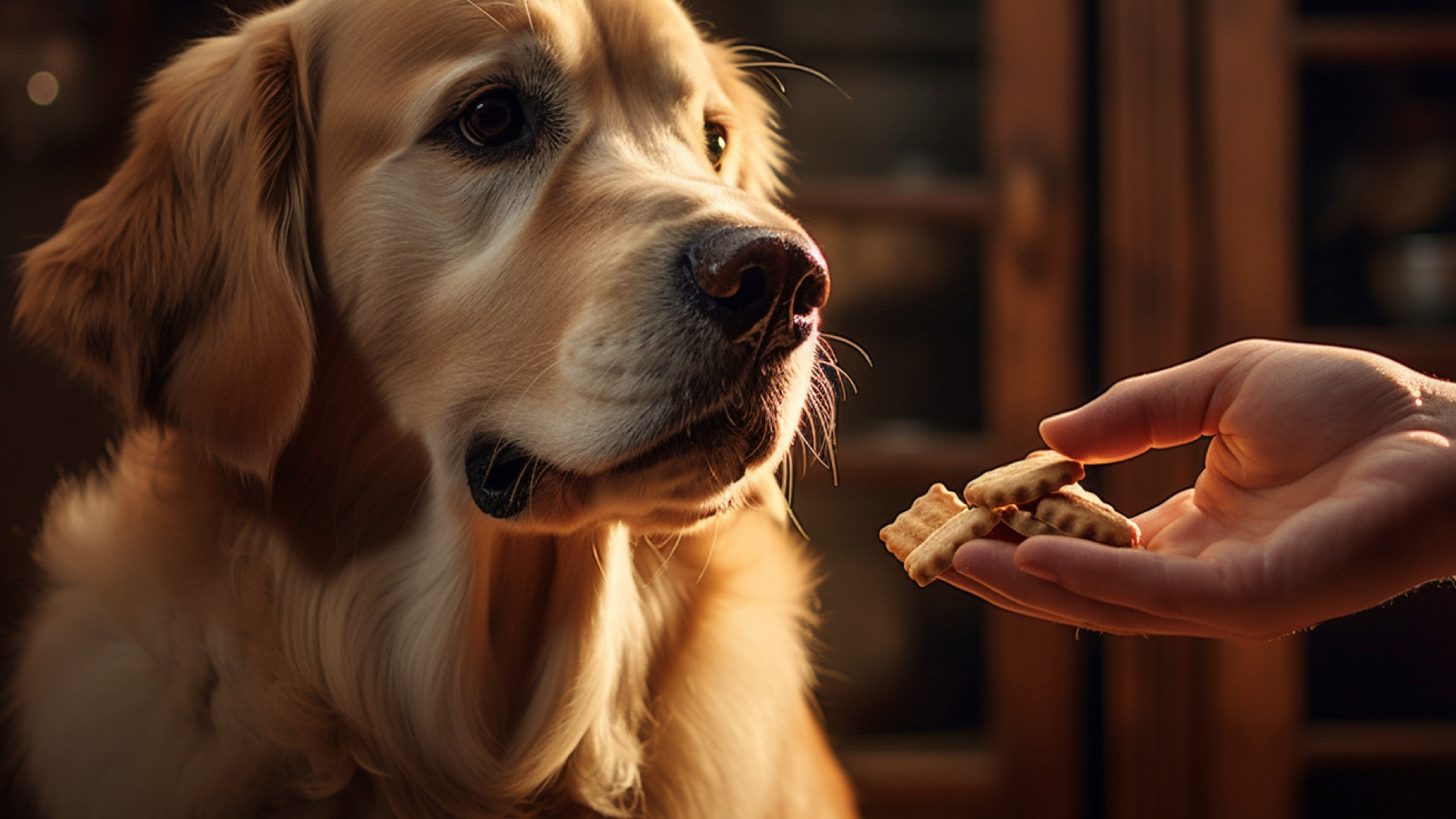The Science of Positive Reinforcement:
A Deep Dive with One of Portland's Top Trainers
Summary:
Positive reinforcement is more than just a training method; it's a celebration of the bond between dogs and their owners. By rewarding good behavior, we tap into the science of dopamine release, ensuring our dogs associate these actions with positive feelings. While there are many tools to aid in this training, like clickers and treat pouches, the key lies in timing and consistency. As one of Portland's top trainers, I've seen firsthand the transformative power of positive reinforcement. From terriers to retrievers, every dog can benefit from this approach, leading to happier, more confident pets.


- What is Positive Reinforcement?
- The Science Behind Positive Reinforcement
- Benefits of Positive Reinforcement in Dog Training
- Common Misconceptions about Positive Reinforcement
- Real-life Stories: Successes with Positive Reinforcement
- Tools and Techniques for Positive Reinforcement
- The Role of Timing in Positive Reinforcement
- Challenges and How to Overcome Them
- Positive Reinforcement vs. Other Training Methods
- Tips for Dog Owners to Implement Positive Reinforcement
Ah, Portland! Known for its bridges, brews, and... brilliant dog trainers? That's right! As one of Portland's top dog trainers, I've seen my fair share of wagging tails and eager eyes. But what's the secret sauce behind a well-behaved pup? Dive in with me as we explore the fascinating world of positive reinforcement, and why it's not just about giving Fido a treat.
What is Positive Reinforcement?
Positive reinforcement is a method where we reward behaviors we want to see more of. Think of it as giving your dog a high-five (or a treat) every time they do something extraordinary. It's not about bribing them but rather celebrating their good choices. This method is based on the principle that behaviors followed by pleasant consequences are likely to be repeated.
The Science Behind Positive Reinforcement
Let's geek out for a moment. The brain releases dopamine, a feel-good neurotransmitter when a dog experiences something pleasurable. By consistently rewarding good behavior, we give our dogs a dopamine rush. Over time, they'll associate that behavior with feeling good, making them more likely to repeat it. It's how we feel when we get a thumbs-up for a well-done job!
Benefits of Positive Reinforcement in Dog Training
Positive reinforcement isn't just a fancy term; it's a game-changer. Dogs trained with this method tend to be more confident and less stressed. They're also more likely to enjoy training sessions because, let's face it, who doesn't love rewards? Plus, it strengthens the bond between the dog and the owner, making those sunset walks by the Willamette River even more special.
Common Misconceptions about Positive Reinforcement
Some think positive reinforcement is about tossing treats and hoping for the best. But it's more nuanced than that. It's about timing, consistency, and understanding your dog's needs. And no, you won't have a spoiled dog; you'll have a companion who trusts and respects you.
Real-life Stories: Successes with Positive Reinforcement
Take Bella, a feisty terrier who used to bark at every bicycle in Portland (and there are a lot!). With positive reinforcement, she went from a bike-chasing enthusiast to a calm observer. Or Max, the retriever who learned to fetch the newspaper without turning it into confetti. These success stories aren't magic; they're science and love in action.
Tools and Techniques for Positive Reinforcement
Some tools can make positive reinforcement more effective, from clickers to treat pouches. A clicker is a small device that makes a distinct sound, marking the moment your dog does something right. Paired with a treat, it's a powerful combo. Speaking of treats, always have them handy in a treat pouch so you can reward them on the spot.
The Role of Timing in Positive Reinforcement
Timing is everything. Reward too early or too late, and you might reinforce the wrong behavior. It's like applauding someone before they finish their performance. The key is to reward immediately after the desired behavior so your dog knows exactly what they're being praised for.
Challenges and How to Overcome Them
Like any method, positive reinforcement has its challenges. Maybe your dog is more interested in squirrels than treats. Or perhaps they're just having an off day. The key is patience and consistency. And remember, every dog is unique, so what works for one might not work for another. It's all about finding what motivates your furry friend.
Positive Reinforcement vs. Other Training Methods
While there are various training methods, positive reinforcement stands out for its science-backed approach and emphasis on building trust. Unlike methods that rely on fear or dominance, positive reinforcement celebrates the bond between humans and dogs. It's not about being the "alpha" but instead being a loving guide.
Tips for Dog Owners to Implement Positive Reinforcement
Ready to dive in? Start by observing your dog to understand what rewards they love. It could be treats, toys, or even praise. Be consistent in your training sessions, and keep them short and fun. And remember, it's a journey. Celebrate the small wins and know that you're building a stronger bond with your pup with every treat and praise.
So, the next time you're out with your furry friend at one of Portland's many dog parks, remember the power of positive reinforcement. It's not just about rewarding good behavior; it's about building a bond of trust and understanding. After all, our dogs aren't just pets; they're family. And just like any family member, they deserve the best training methods that science and love can offer.


